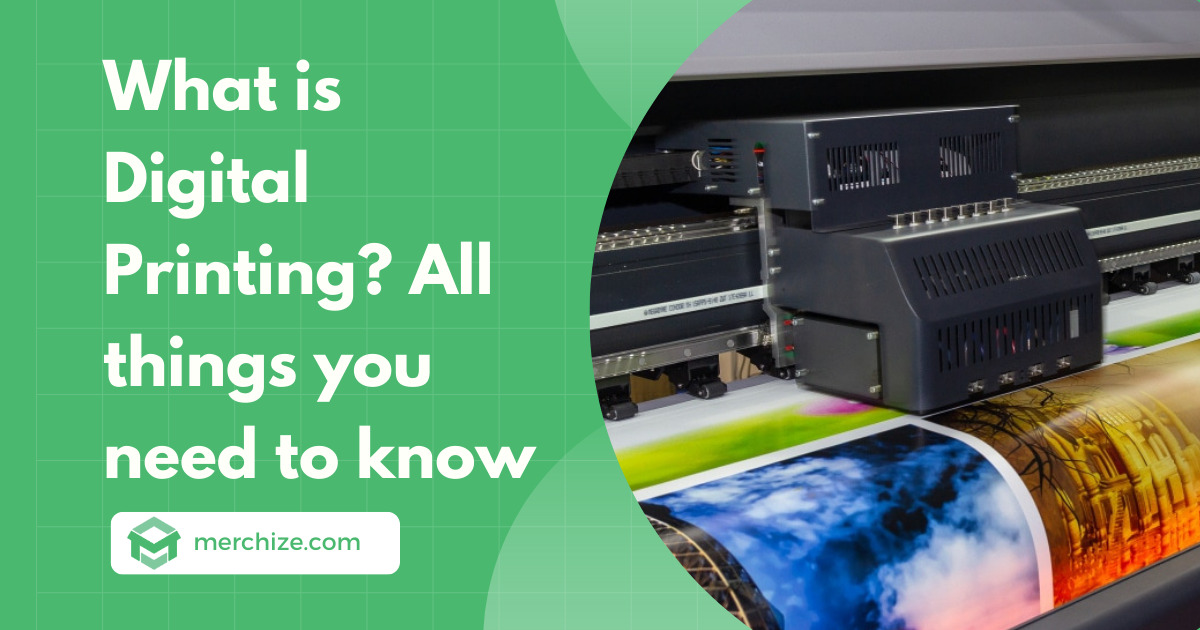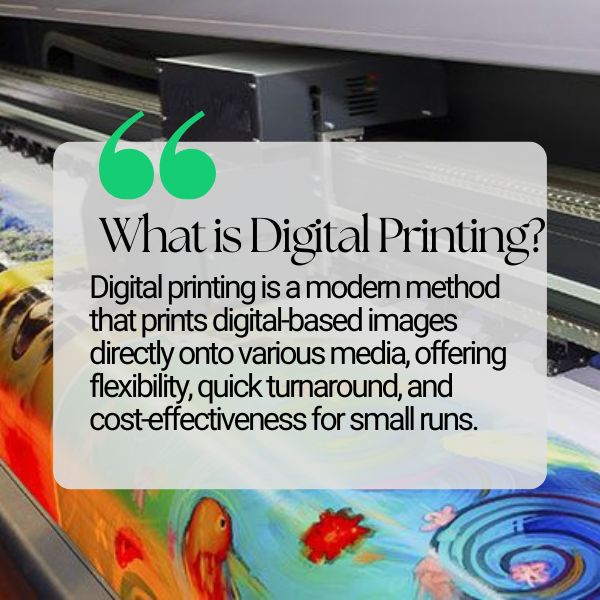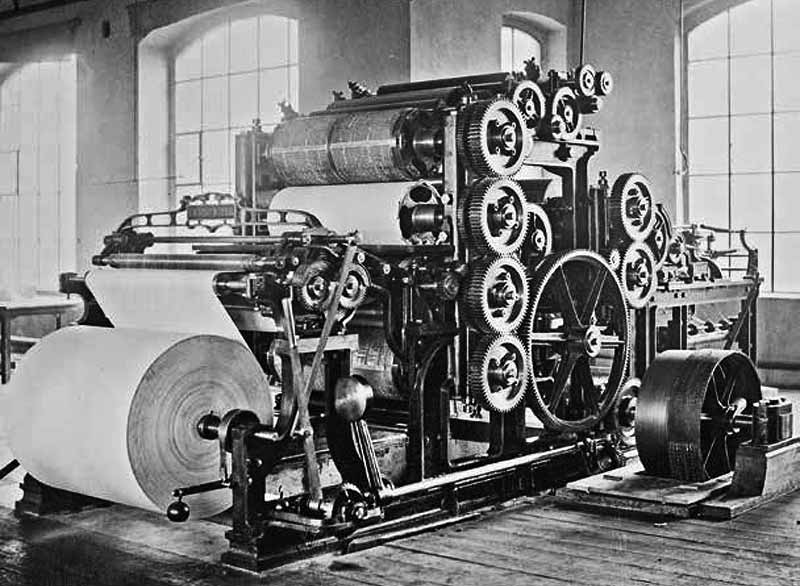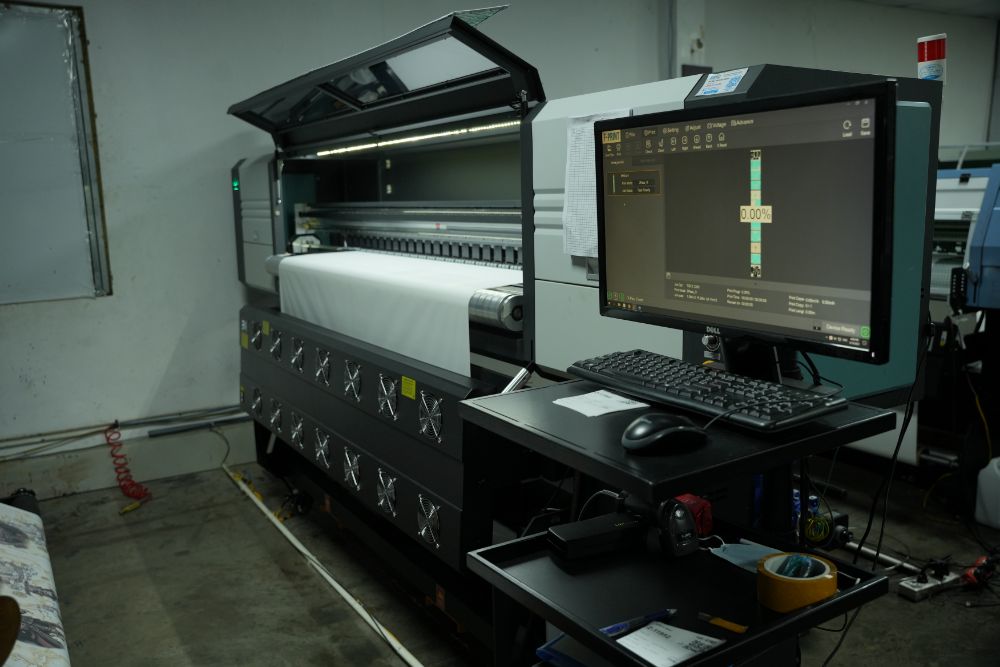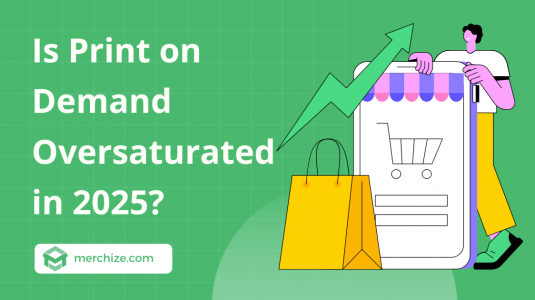Contents
Digital printing has revolutionized the print production process, yet some mystery still surrounds this innovative technology. While most are familiar with the term itself, what exactly does digital printing entail? How does it work and in what ways does it differ from traditional printing methods?
In this comprehensive guide, we demystify the concept of digital printing at its core. We’ll explore the technology behind it, its emergence and evolution in the industry, key benefits and limitations, and why it has increasingly become the go-to for on-demand merchandise, photo books, marketing materials and more.
Whether you are a customer looking to better understand modern production methods or a business owner navigating printing options, this article unpacks everything there is to know. Join us as we lift the curtain on digital printing, examine its inner workings, and showcase why for many providers like ourselves, digitally-printed products have become the new industry standard.
What is Digital Printing?
Digital printing refers to printing from digital files or content directly onto mediums like paper, cardstock, and fabric using colorant-based technologies like inkjet or laser. Rather than a physical printing plate, this method utilizes digital data fed straight into high-volume laser or inkjet printers.
This makes digital ideal for on-demand output, enabling rapid turnaround and personalization of smaller quantity orders. As instant set-up cuts out pre-press steps, digital also economizes smaller print runs in a scalable way traditional plate-based methods struggle with.
New generations of equipment have made digital printing nearly rival offset printing’s efficiencies at mass scale as well. Continued technological evolution will further cement digital’s integral role in the Print-On-Demand landscape. It unlocks cost-effective production needed for customizable and nimble item customization for countless applications.
Digital Printing History: A Timeline of Innovation
Digital printing, introduced in 1993, didn’t emerge in a vacuum, but rather as the result of a series of groundbreaking developments and technological progression. The pathway to this innovative form of printing commenced with the invention of the first photocopy by Chester Carlson in 1938, a journey punctuated by numerous critical milestones that significantly impacted the evolution of the printing sector.
- 1439 – Johannes Gutenberg invents the movable type printing press, allowing faster production of printed materials and expanding their availability. This kicks off a series of incremental improvements in printing capabilities over the centuries.
- 1790s – Lithography printing is introduced, using flat stone or metal plates and a greasy ink substance to transfer images onto surfaces. The process eventually gets adapted for early commercial applications.
- 1843 – Richard March Hoe develops the rotary press which revolutionizes newspaper printing by allowing continuous rolls of paper to be printed instead of individual sheets. This paved the way for higher volume runs.
- 1875 – Leveraging rotary press technology, a new high-volume printing technique is invented using an inked printing plate transferring images onto a rubber blanket and then onto the final surface. This offset printing method dominates 20th century production.
- 1938 – The inception of electrophotography and photocopying arrives with Chester Carlson’s creation of machines using electrostatic charges and dry ink powder to print duplicate images onto paper.
- 1977 – Benny Landa enhances photocopier performance by pioneering use of liquid ElectroInk made of charged toner particles, increasing output speeds considerably. This ink concept would later be employed in digital printing presses.
- 1985 – Office laser printers are popularized for small business and home use, providing economical high-quality prints. These gradually improved to handle color and more volume throughout the 90s as well. Their technology served as infrastructure enabling future digital print systems.
- 1993 – Benny Landa leverages ElectroInk breakthroughs to invent the Indigo E-Print 1000, the world’s first commercial digital printing press. This cemented the swift rise of direct printing from computers.
- Early 2000s – Ongoing refinement of digital equipment plus proliferation of personal computing and software expands applications and customization abilities, firmly establishing digital printing’s indispensable role in Print-on-Demand.
The first web-fed rotary press was invented by Koenig & Bauer in 1846 (Source prepressure.com)
The chronicle of digital printing is a demonstration of human creativity and our ceaseless quest for innovation. As we consistently challenge the limits of feasibility, the sphere of digital printing hints at a future brimming with even more thrilling progressions.
Types of Digital Printing
Digital printing encompasses various technologies, each with unique capabilities catering to different applications:
- Inkjet Printing uses nozzles spraying microscopic ink droplets directly onto materials like paper and cardstock. The process excels at variable data printing and photo reproductions.
- Laser Printing employs a laser beam and powdered toner to electrically “draw" page images onto a drum before transferring and fusing toner particles to the print surface with heat. Lasers work well for high-volume black & white documents.
- Solid Ink Printing utilizes solid wax-like ink sticks melted into liquid form for vibrant color application onto materials via piezo printheads. The process delivers bold, durable outputs ideal for wide-format signage and graphics.
- Dye-Sublimation Printing uses heat to infuse fabric, metal or plastic substrates with vaporized dye for stunning, enduring full-color images on mugs, clothes, phone cases and more.
- Digital Presses harness the quality and efficiencies of offset printing but with the flexibility, automation and customization of digital. They bring scalable, personalized printing mass production.
With such diversity, digital printing’s forms factor into countless print-on-demand applications.
Digital Printing machine in Merchize’s factory
Advantages of Digital Printing
Several inherent strengths make digital the printing technology of choice across countless applications:
- Speed and Responsiveness: Plateless printing enables rapid job turnaround, facilitating urgent delivery and capitalizing on emerging business opportunities.
- Adaptability and Innovation: Prints on vast substrate range including paper, plastics, metals, and fabrics. Versatility unlocks product innovation possibilities.
- Scalability and Growth: Economical at low quantities yet also rivaling offset quality and consistency at mass volumes. Supports business expansion goals.
- Sustainability: Inkjet and laser methods reduce waste through precise ink/toner application. Streamlined workflows cut energy consumption as well.
- Accessibility and Customization: Affordability democratizes access for small business, empowering product experimentation and customization at scale.
By fusing design freedom, responsiveness and lean production, digital propels industries forward through optimized creativity, efficiency and sustainability.
Disadvantages of digital printing
While advantageous across many applications, digital printing does have some inherent limitations to factor in:
- Cost: Plateless digital setup incurs added expense per job rather than amortizing prep over long print runs. So traditional offset printing achieves greater economy at very high volumes.
- Consistency: Print quality relies heavily on the capabilities of the specific digital press. Lower-end equipment struggles with fine detail and color accuracy. Advanced systems minimize inconsistencies.
- Durability: Digital prints lack a protective top layer, making them less durable over time, especially when exposed to abrasion, light or moisture. Laminates can help prolong longevity.
- Fabric printing: The range of print-suitable fabrics runs more limited compared to screen printing methods. Expanding material options remains an R&D priority.
- Whites & pastels: Most digital printers struggle to apply standout white or ultra-light tones as a base layer before colors. Without white ink prelay, darker fabrics become restricted.
By understanding current constraints, print providers can best match digital printing strengths to appropriate applications while educating clients on tradeoffs where traditional techniques still excel.
As outlined, digital printing brings transformational responsiveness, versatility and scalability to the world of print production and product merchandising. Its advantages have positioned digital as a trusted staple technology for nimble businesses requiring affordable low quantity runs, swift delivery and customization abilities to drive growth. At Merchize our own print-on-demand fulfillment services harness these same digital printing strengths – combining quality, flexibility and accessibility with global order streamlining and logistics. For any organization seeking a print partner suited to today’s fast-paced consumer landscape, contact us to explore how our digital printing capabilities can propel your developing brand and products.
